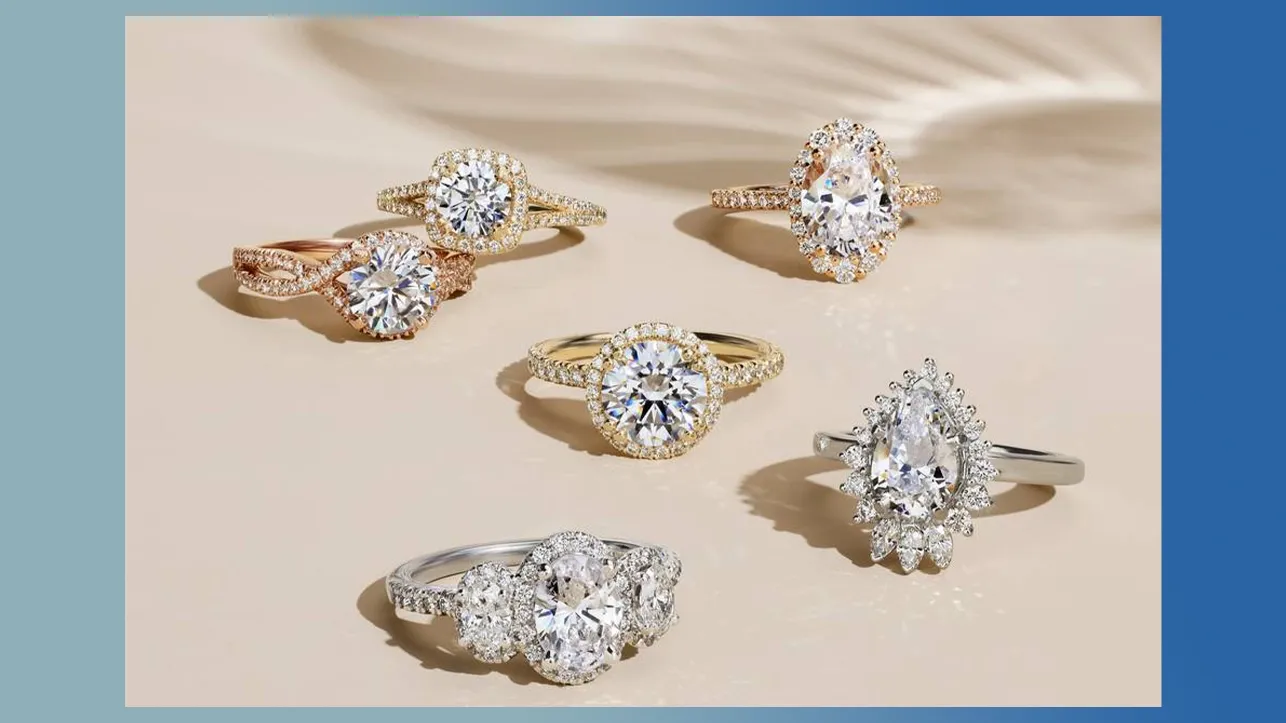The Ultimate Guide to Diamond Engagement Rings: Styles, Cuts, and Trends

Diamond engagement rings have a rich and fascinating history that dates back to ancient times. The tradition of giving a diamond ring to signify betrothal isn't new. It can be traced back to the Ancient Romans. This tradition was adopted and amplified by the De Beers diamond company in the 20th century with their marketing strategy that linked diamonds with eternal love.
Diamond engagement rings are not just a symbol of love, but also a reflection of a person's style and personality. They have become an integral part of the proposal and marriage process, symbolizing commitment, fidelity, and the promise of a future together.
The importance and symbolism of diamond engagement rings have evolved over the centuries. Today, they are seen as a symbol of love, commitment, and a promise of eternal togetherness. They are also viewed as a status symbol, reflecting the wealth and social standing of the wearer.
1.Understanding Diamonds
When it comes to diamonds, the four Cs - Cut, Clarity, Carat, and Color - are crucial. These four characteristics determine the quality and value of a diamond.
The cut of a diamond is all about how well the diamond has been shaped and polished from its rough state. The clarity refers to the internal and external flaws, or inclusions, in a diamond. The carat refers to the weight of the diamond. And the color refers to the presence of any color in a diamond, with the most valuable diamonds being completely colorless.
Each 'C' has a significant impact on a diamond's appearance and value. For instance, a well-cut diamond reflects light beautifully, making it look brilliant and sparkly. On the other hand, a diamond with high clarity has fewer inclusions, making it look flawless and clear.
2.Popular Diamond Cuts
There are several diamond cuts available, each with its unique charm and beauty. The Round Brilliant Cut is a timeless classic that has been around for centuries. It is known for its exceptional brilliance and versatility.
The Princess Cut is a modern favorite known for its square shape and sharp, uncut corners. It is the second most popular cut after the Round Brilliant Cut.
The Oval Cut is an elongated beauty that offers a larger surface area than the Round Brilliant Cut. It is a perfect choice for someone who wants a unique yet classic diamond engagement ring.
The Cushion Cut, also known as the Pillow Cut, has a vintage charm that is hard to resist. It has rounded corners and larger facets to increase its brilliance.
The Emerald Cut is an art deco elegance known for its rectangular facets and elongated shape. It is less sparkly than the other cuts but is more transparent, making it a perfect choice for someone who values clarity over brilliance.
3.Engagement Ring Styles
There are several engagement ring styles to choose from, each with its unique charm and beauty. The Solitaire style is a classic simplicity that features a single diamond in the setting. It is a perfect choice for someone who prefers a minimalist and elegant look.
The Halo style features a center diamond surrounded by smaller diamonds, creating a sparkling surround that enhances the size and brilliance of the center diamond.
The Three-Stone style features three diamonds that symbolize the past, present, and future of a relationship. It is a perfect choice for someone who wants a ring with a symbolic meaning.
The Vintage style is all about romantic nostalgia. It features designs and details that take inspiration from different eras, from the intricate designs of the Victorian era to the geometric patterns of the Art Deco era.
The Modern style is all about contemporary chic. It features sleek lines, geometric shapes, and a minimalist aesthetic. It is a perfect choice for someone who values modern design and simplicity.
4.Current Trends in Engagement Ring Designs
Engagement ring designs are constantly evolving, with new trends emerging every year. One of the current trends is colored diamonds. These diamonds break the traditional norms of engagement rings and offer a unique and vibrant alternative to the classic colorless diamond.
Unique settings are also on the rise. These settings feature unique and creative designs, from intricate detailing to innovative shapes and structures.
Sustainable diamonds are another trend that is gaining popularity. These diamonds are ethically sourced and offer an eco-friendly alternative to traditional diamonds.
Custom designs are also becoming increasingly popular. These designs offer a personal touch, allowing you to create a ring that reflects your personal style and story.
5.Conclusion
Choosing the right diamond engagement ring involves considering several factors, including the 4Cs of diamonds, the style and cut of the diamond, and your personal style and preference.
The future of diamond engagement rings is likely to see more trends and changes, with a focus on sustainability, individuality, and creativity. Whether you prefer a classic Round Brilliant Cut or a vibrant colored diamond, there is a diamond engagement ring out there that is perfect for you.
6.FAQ
Q: What are the 4Cs of diamonds?
A: The 4Cs of diamonds are Cut, Clarity, Carat, and Color. These four characteristics determine the quality and value of a diamond.
Q: What are the different styles of engagement rings?
A: There are several styles of engagement rings, including Solitaire, Halo, Three-Stone, Vintage, and Modern.
Q: What are the current trends in engagement ring designs?
A: Current trends in engagement ring designs include colored diamonds, unique settings, sustainable diamonds, and custom designs.
Q: How do I choose the right diamond engagement ring?
A: Choosing the right diamond engagement ring involves considering several factors, including the 4Cs of diamonds, the style and cut of the diamond, and your personal style and preference.
Q: What is the future of diamond engagement rings?
A: The future of diamond engagement rings is likely to see more trends and changes, with a focus on sustainability, individuality, and creativity.
